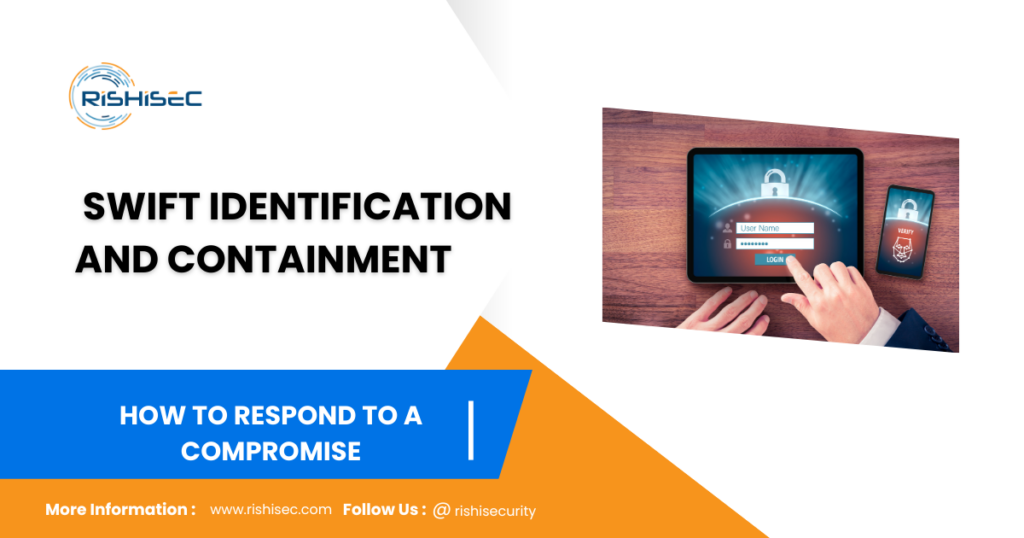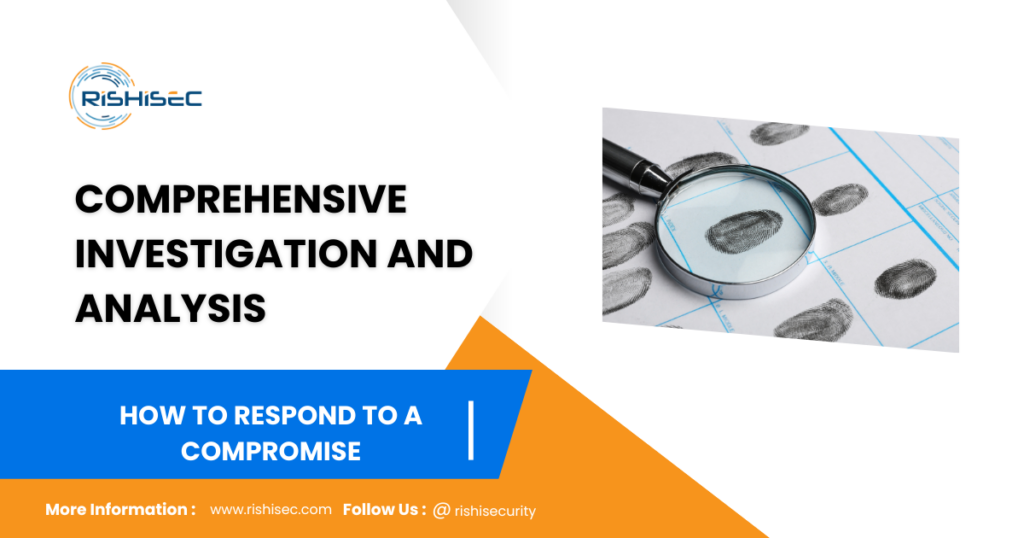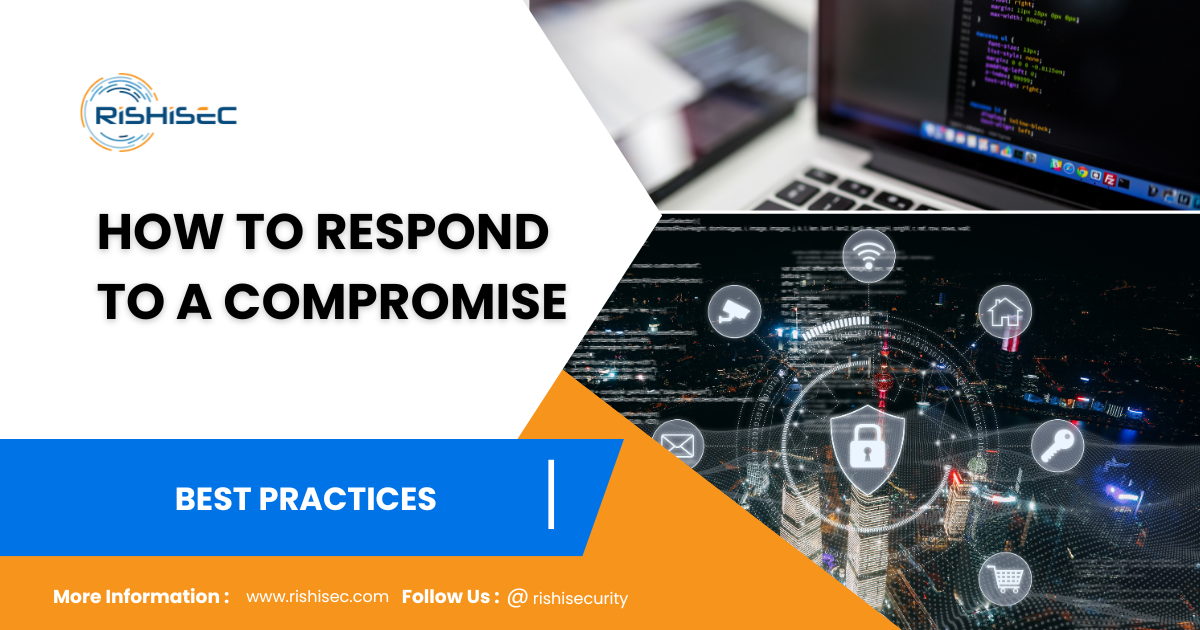In the high-stakes world of cybersecurity, breaches are inevitable. But how you respond to a compromise can determine the long-term impact on your organization. Effective incident response isn’t just about having a plan—it’s about having the right people, processes, and technologies in place to detect, contain, and recover from a breach swiftly.
This guide outlines the best practices for responding to a cybersecurity compromise, ensuring that your organization can act decisively to minimize damage and strengthen its defenses.
Contents
1. Swift Identification and Containment

Time is of the essence in any cybersecurity compromise. The longer a breach remains undetected, the more damage it can cause. That’s why your first move should always be swift identification and containment.
Start by ensuring your team is equipped with advanced monitoring tools like Threat Intelligence Platforms (TIPs) and Endpoint Detection and Response (EDR) systems. These tools can detect unusual activity in real-time, allowing your security operations team (SOC) to quickly identify potential breaches. TIPs provide real-time threat intelligence, enabling you to react faster to emerging threats, while EDR systems continuously monitor endpoints for malicious activity.
A good example of rapid response can be seen in the case of ABC Financial Services, where a phishing attack was detected within minutes by their EDR system. The SOC team immediately contained the threat, limiting the exposure of sensitive customer data.
Key Takeaway: Ensure your monitoring systems are optimized to detect breaches in real-time. Train your team to respond immediately with predefined containment steps to minimize the impact.
2. Comprehensive Investigation and Analysis

Once the threat has been contained, the next step is to investigate the breach thoroughly. The objective here is to determine the root cause of the compromise, the scope of the damage, and the systems affected.
Using Advanced Forensic Tools (AFTs), your team can trace the breach to its source, analyze malware behavior, and understand how the attack unfolded. This investigation is crucial to preventing further damage and ensuring that the vulnerabilities exploited in the attack are properly addressed.
Consider this scenario: A healthcare organization discovered that a single compromised account had led to a breach of patient data. By using AFTs, the organization pinpointed the exact moment of the compromise, discovering that the attacker had used a weak point in their VPN access. This investigation not only led to remediation but also to significant improvements in their remote access policies.
Key Takeaway: Invest in forensic analysis tools and processes that allow your team to perform a deep dive into any compromise. Understanding how the breach happened is key to preventing future incidents.
3. Effective Remediation and Recovery
With the cause and scope of the compromise identified, it’s time to move on to remediation. The goal here is to fix the vulnerabilities that led to the breach and ensure that your systems are secure.
Steps in the remediation process may include:
- Patching vulnerable systems that were exploited.
- Revoking compromised credentials and resetting passwords.
- Reconfiguring security settings on affected systems.
However, remediation doesn’t stop there. You must also restore systems and data that were compromised. Your recovery plan should include restoring backups and validating the integrity of the data. Once this is complete, ensure that your systems are fully updated and aligned with the latest security patches.
Key Takeaway: Remediation isn’t just about fixing the immediate problem; it’s about fortifying your defenses to prevent future attacks. Ensure your remediation process is thorough and involves all impacted systems.
4. Strengthening Defenses Through Lessons Learned

The final step in the incident response process—and arguably one of the most important—is the post-incident review. Many organizations overlook this, but it’s essential to improving your overall cybersecurity posture.
Conducting a thorough post-incident review allows your team to:
- Identify gaps in your incident response plan.
- Learn from mistakes or delays that occurred during the breach.
- Adjust security policies and procedures to prevent similar incidents in the future.
For example, following an insider threat incident, a global retail organization conducted a post-incident review and discovered that their access control policies were too lenient. They immediately revised their privileged access management (PAM) protocols, reducing the risk of future insider threats.
Key Takeaway: Use every breach as a learning opportunity. Regularly review and update your incident response plan, making sure your team is aware of any changes and improvements.
Bonus Tip: Automate Where Possible
In today’s cybersecurity landscape, automation is a crucial component of incident response. By automating repetitive tasks such as alerting, threat detection, and reporting, your team can focus on more strategic activities like investigation and remediation.
Many organizations are adopting Security Orchestration, Automation, and Response (SOAR) platforms to streamline their response processes. SOAR can integrate with your existing security tools, automatically triggering responses like blocking suspicious IP addresses or isolating infected endpoints. This not only speeds up your response time but also reduces the risk of human error during a critical incident.
Key Takeaway: Explore automation solutions that can complement your incident response strategy and free up your team for high-priority tasks.
5. Free Trial of SentryCA: Prepare Your Team for the Next Breach
Is your organization equipped to handle a compromise efficiently and effectively? Take the first step toward building a faster, more reliable incident response plan by signing up for a free trial of SentryCA.
SentryCA is a comprehensive cybersecurity platform designed to help your team detect, respond to, and recover from cyber threats with precision. From real-time monitoring and advanced forensics to automated response capabilities, SentryCA offers everything you need to ensure your team is ready for the next attack.
Don’t wait until the next breach—sign up for your free trial today and experience the difference SentryCA can make for your organization.
Conclusion
Responding to a cybersecurity compromise is no easy task. But by following these best practices—swift identification, comprehensive investigation, effective remediation, post-incident reviews, and leveraging automation—you can significantly reduce the impact of a breach and strengthen your overall security posture.
Remember: The key to success is preparation. Ensure that your team is equipped with the right tools and processes to act quickly and decisively. And if you’re looking for a way to streamline your incident response efforts, SentryCA is here to help.
Take control of your cybersecurity today by reading this useful post, Compromise Assessments for Financial Institutions: Strengthening Cybersecurity in an Evolving Threat Landscape


